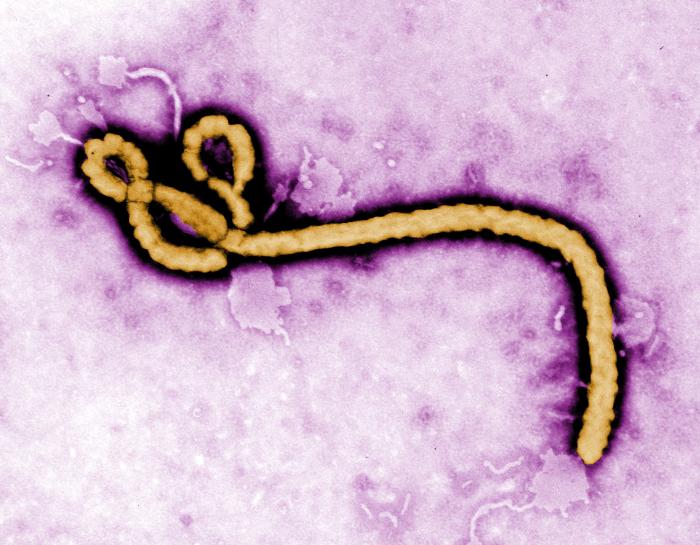Ebola: Still the Scariest Virus Out There? - Simply uttering the word Ebola is enough to cause a person to cringe, shudder, twitch, or perhaps even recoil in horror. Rightly so. Ebola hemorrhagic fever (Ebola HF), the result of an infection with one of the four identified sub-types of Ebola viruses known to affect humans, is gruesome. Ebola infection can result in a mortality rate as high as 90 percent of all infected individuals, according to the World Health Organization (WHO).
The real horror, though, comes when you know that no one is sure where Ebola can be found (until there’s an outbreak, of course); there are no vaccines and no treatments; and we’re still uncertain about how people are infected in the first place.

Ebola hit the international stage without warning and with dumbfounding devastation. In 1976, outbreaks in Zaire and Sudan resulted in 318 and 284 cases, with 280 and 151 deaths, respectively. Since 1976, sporadic outbreaks have occurred, ranging from a single case to a massive 425 cases in Uganda in 2000. Since 1976, well over 2,000 cases have been identified, with over 1,000 deaths. According to the Centers for Disease Control and Prevention (CDC), outbreaks have occurred in Uganda as recently as November 2012.
Ebola HF, named after a river where it was first recognized in Zaire (now the Democratic Republic of the Congo), is a disease that affects humans and non-human primates (monkeys, gorillas, and chimpanzees) that was first recognized in 1976. It’s a type of RNA virus known as Filoviridae. There are four sub-types of the virus that cause disease in humans: Ebola-Zaire, Ebola-Sudan, Ebola-Ivory Coast, and Ebola-Bundibugyo. A fifth type, Ebola-Reston, can cause disease in primates, but has not affected humans in the past.
All confirmed cases of Ebola HF in humans have occurred in African countries: the Democratic Republic of the Congo, Gabon, the Ivory Coast, the Republic of the Congo, Sudan, and Uganda. The Ebola-Reston virus, dangerous to monkeys, was found in research laboratories in the United States, Italy, and the Philippines. While some researchers were also infected with this strain, they were asymptomatic.
The WHO thinks that the route of transmission is zoonotic, meaning the Ebola is spread from animal to human. Contact with infected primates, and interestingly enough, fruit bats and dead forest antelope or porcupines have been documented as ways the virus gets passed along to people. Once in a human host, transmission between humans can happen via blood, secretions, organs, or other bodily fluids. Scarier still is the fact that burial ceremonies of dead Ebola patients, healthcare worker interaction with patients, and even semen passed up to seven weeks post-infection, can play all a role in transmission, too.
The incubation period—the time between infection and when a person has symptoms—is estimated to be between two and 21 days. Ebola HF is an acute-onset disease, meaning, it’ll happen fast, with immediate symptoms that can include joint pain, fever, chills, diarrhea, fatigue, headache, nausea, sore throat, and vomiting, according to the National Institutes of Health. As the disease progresses, the most severe symptoms—for which Ebola HF became infamous—begin to take their toll: bleeding from the eyes, ears, nose, mouth, rectum, and internal bleeding may occur. Depression, swollen eyes and genitals, painful skin, a red, inflamed roof of the mouth, and a hemorrhagic rash (containing blood) over the entire body characterize the most devastating symptoms.
The prognosis is poor: Between 25 and 90 percent of all outbreak cases of Ebola HF die, usually from low blood pressure (aka shock), rather than blood loss, as might be expected. Early, non-specific symptoms can make Ebola HF difficult to diagnose, but lab tests can detect the disease within a few days of disease onset.
It is difficult to pin down preventative measures when the exact location and mode of transmission are unknown. For now, the best advice available, echoed by the CDC, WHO, and others, is to avoid endemic areas in times of outbreaks altogether. Since there’s no treatment for Ebola HF the most that can be done for a patient is what’s called “supported therapy,” which entails balancing fluids and electrolytes, blood pressure, oxygen, and monitoring for other infections.
A recent study in the journal Chemistry and Biology found potential for a treatment and cure, in a compound that can block viral RNA synthesis, among other things. The research showed that sometimes the scientists could prevent the Ebola virus (and others) from proliferating by using a compound known as CMLDBU3402. It will be important to see if anyone else can repeat these results and potentially develop treatment for Ebola and other deadly RNA viruses.
While Ebola HF is unlikely to cause the next zombie apocalypse, as long as no treatment is available this virus will remain a terrifying and almost mythical disease. ( takepart.com )
Why do you think that Ebola looms so large in people’s fears, even while viruses like malaria, dengue fever, and even the flu kill so many more people?--By Steve Purcell
Blog : Spectacle Grander
No comments:
Post a Comment